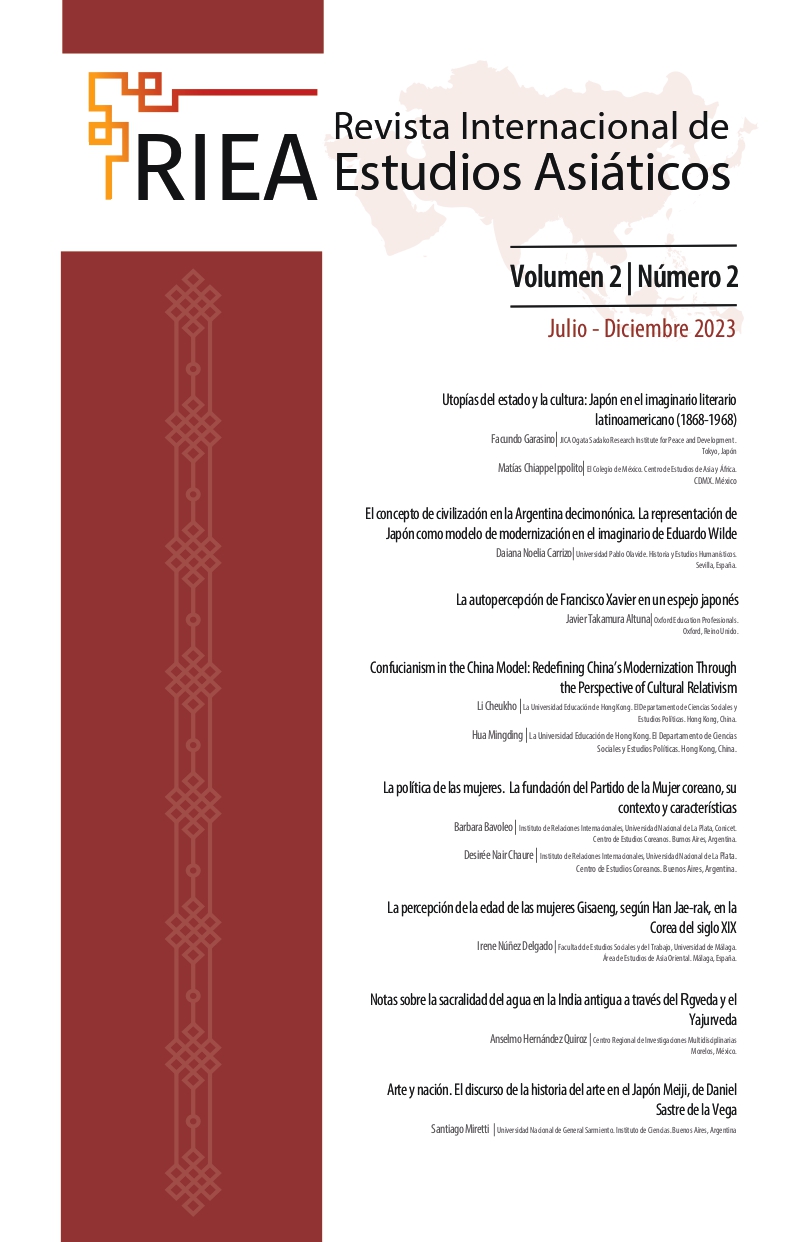Abstract
From its origin in the 14th century to its end in the 19th century, the Joseon Dynasty is identified as one of the most important periods in Korean history. In this context, the role of the gisaeng, women belonging to the lowest class of society (cheonmin), who were dedicated to the entertainment of the men of the highest class (yangban) through their knowledge of the arts, stands out. This study presents an investigation into the age perception of gisaeng women, using the book "녹파잡기" (Nokpajapgi) as a primary source. This is a compilation of records on the most prominent gisaeng in the Pyongyang region in the early 19th century, compiled by author Han Jae-rak, a yangban man of the time. For its analysis, a translation work from Korean into Spanish has been carried out, since there was no previous translation of these records into Spanish. The translation of "녹파잡기" brings an innovative character to this study, introducing these records to the Spanish-speaking public, with the aim of initiating new lines of research of this book in Spanish.
References
Cho, Ha-Na, y Mi-Young Kim. “A Study on the Existence of Courtesans During the Joseon Dynasty”. The Journal of the Korea Contents Association 21, n.o 1 (28 de abril de 2021): 833–41. https://doi.org/10.5392/JKCA.2021.21.04.833
Choi, Seong-hwang. “경화사족 (京華士族)”, Encyclopedia of Korean Culture (한국민족문화대백과사전). Accedido 1 junio de 2022, http://encykorea.aks.ac.kr/Contents/Item/E0076530
Ha, Hyo-gil. “문방구 (文 房 具 )”. Encyclopedia of Korean Culture (한국민족문화대백과사전). Accedido 11 de junio de 2022. http://encykorea.aks.ac.kr/Contents/SearchNavi?keyword=%EB%AC%B8%EB%B0%A9%EA%B5%AC&ridx=0&tot=1689
Han, Hee-sook. “Women’s life during the Chosŏn Dynasty”. International Journal of Korean History 6, (2004): 113-160.
Han, Jae-rak. 녹파잡기. Traducido por Ahn Dae-gyeong. Corea: Humanist, 2017.
Ji-young, Suh. “Women on the Borders of the Ladies’ Quarters and the Ginyeo House: The Mixed Self-Consciousness of Ginyeo in Late Joseon”. Korea Journal 48, n.o. 1 (2008): 136-159. https://doi.org/10.25024/kj.2008.48.1.136
Kim, Jung-won. “Negotiating Virtue and the Lives of Women in Late Choson Korea”. Tesis de doctorado en Filosofía, Universidad de Harvard, 2008.
김영희. “[무용(3)] 『검무』 구조의 분석”. 공연과리뷰 23, nº 2 (2017): 26–41.
문숙자. "조선후기 노비 家系와 婢 - 筆巖書院 <奴婢譜>의 분석을 통하여 -". 여성과 역사 n.o 11 (2009): 133-167, https://doi.org/10.22511/women..11.200912.133
Mueller, Ruth H. “Female Participation in South Korean Traditional Music: Late Chosŏn to the Present Day”. Tesis de doctorado en Músicología, Universidad de Sheffield, 2013.
National Institute of Korean History. "과거 제도”. Accedido 12 de junio de 2022. http://contents.history.go.kr/front/tg/view.do?treeId=0209&levelId=tg_003_0910&ganada&pageUnit=10
Seth, Michael J. A history of Korea: From antiquity to the present. Estados Unidos: Rowman & Littlefield Publishers, 2010.
Oh, Soo-chang. “Economic growth in P'yongan province and the development of pyongyang in the late choson period”. Korean Studies 30 (2006): 3-22.
Wonyong, Kim, Woongu, Kang y Doménech del Río, Antonio J. Gyeongju Namsan: la montaña Namsan en Gyeongju: esculturas budistas en la tierra pura del reino coreano de Silla. Córdoba: Berenice, 2009.

